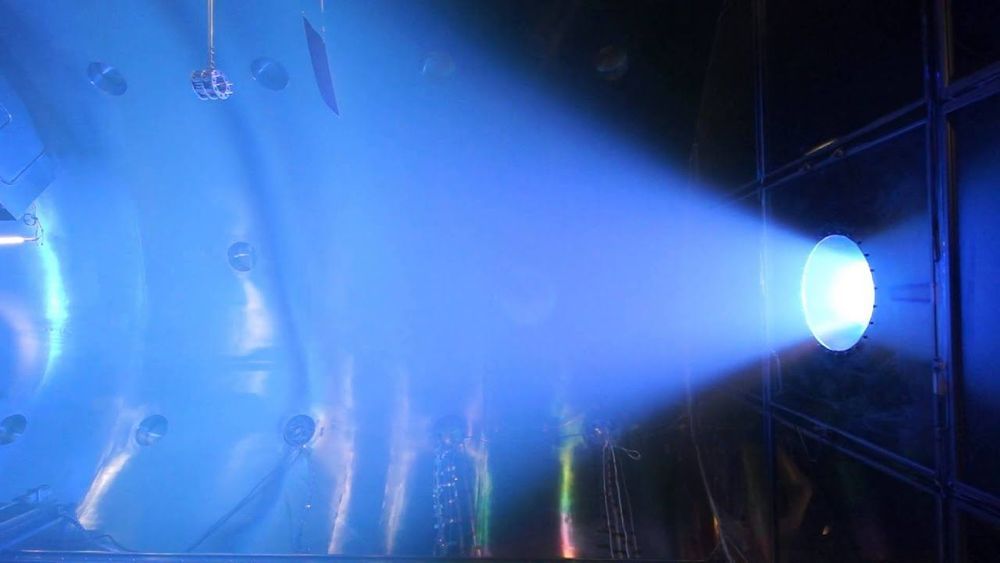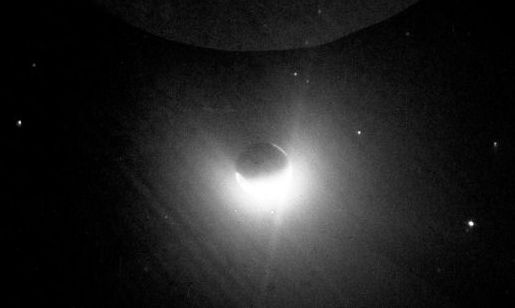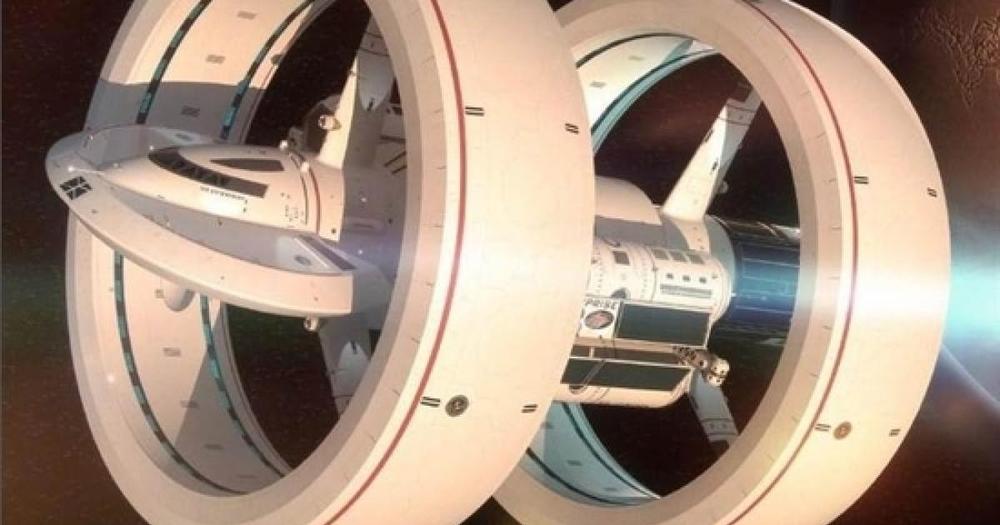Page 9090
Feb 21, 2019
New Research: Earth’s Atmosphere Extends Well Beyond the Moon
Posted by Quinn Sena in category: space
Feb 21, 2019
World’s Biggest Bee, Once Thought Extinct, Has Been Found Alive
Posted by Quinn Sena in category: evolution
A black, thumb-sized missile sails through the jungle air, a thunderous buzzing announcing its arrival. The massive insect lands heavily on a tree-bound termite nest, taking a moment to fold its brassy wings and stretch its humongous, curved jaws. This is Wallace’s giant bee, the beefiest and bumbliest bee on Earth. After going missing for nearly four decades, the species has just been rediscovered in its native Indonesia.
Wallace’s giant bee (Megachile pluto) gets its name from its original discoverer, Alfred Russel Wallace, the British naturalist famous for independently conceiving the theory of evolution through natural selection alongside Charles Darwin. Wallace collected the bee while on an expedition in Indonesia’s North Moluccas islands in 1858, describing it as a “large black wasp-like insect, with immense jaws like a stag-beetle.” The tiny titan then went more than a century without being spotted by Western scientists, only seen again by entomologist Adam Messer in 1981, who was able to observe some of its behavior on a number of small islands. But since then, no one had documented any encounters with the huge bee.
Feb 21, 2019
Is Immortality Possible?
Posted by Paul Battista in categories: biotech/medical, evolution, life extension

Firstly, it greatly depends on how you define immortality. If you define it as living forever and being indestructible as in a comic book, then, no, it is highly unlikely. However, if you define it in terms of showing no decline in survival characteristics, no increase in disease incidence and no increase in mortality with advancing age, then yes. The first is a science-fiction fantasy; the second is based on real-world biology that evolution has already selected for in certain species. We call this state negligible senescence.
Senescence and negligible senescence
Feb 21, 2019
James Hughes’ Problems of Transhumanism: A Review (Part 2) – Article
Posted by B.J. Murphy in category: transhumanism
This is Part 2 of a 5-part series by Chogwu Abdul, founder of the Transhumanist Enlightenment Café (TEC), where he explores the thought-provoking intricacies of James Hughes’ “Problems of Transhumanism.”
In this Part, he explores “Deism, Atheism and Natural Theology.”
Feb 21, 2019
A prosthetic that restores the sense of where your hand is
Posted by Paul Battista in categories: biotech/medical, cyborgs, robotics/AI, transhumanism
Researchers have developed a next-generation bionic hand that allows amputees to regain their proprioception. The results of the study, which have been published in Science Robotics, are the culmination of ten years of robotics research.
The next-generation bionic hand, developed by researchers from EPFL, the Sant’Anna School of Advanced Studies in Pisa and the A. Gemelli University Polyclinic in Rome, enables amputees to regain a very subtle, close-to-natural sense of touch. The scientists managed to reproduce the feeling of proprioception, which is our brain’s capacity to instantly and accurately sense the position of our limbs during and after movement – even in the dark or with our eyes closed.
The new device allows patients to reach out for an object on a table and to ascertain an item’s consistency, shape, position and size without having to look at it. The prosthesis has been successfully tested on several patients and works by stimulating the nerves in the amputee’s stump. The nerves can then provide sensory feedback to the patients in real time – almost like they do in a natural hand.
Feb 21, 2019
NASA’s Future Spaceships Will Travel At 1 Million Miles Per Hour
Posted by Quinn Sena in categories: solar power, space
NASA could be on the verge of a breakthrough. Currently, NASA is working on an advanced propulsion engine, that if cracked, can elevate our space travel to the next level. For decades, spacecraft have been stuck traveling at low chemical speeds, limiting our ability to research and explore space. However, now speeds of over one million miles per hour before 2050 are possible. The NASA institute for Advanced Concepts (NIAC) is funding two high potential concepts.
There are new ion drives being developed right now that could have power levels that are tens thousand times higher. Antimatter propulsion and multi-megawatt ion drives are being developed. The current speeds of spacecraft are quite low in space terms. The Voyager 1 spacecraft is moving at 38,000 mph (61,000 km/h). This speed was achieved mostly by a chemical rocket but also with the assistance of gravity, using it to slingshot the spacecraft out of orbit. Juno, Helios I and Helios II managed to reach speeds of around 150,000 mph using gravitational boosts also. The recently launched Parker Solar Probe will reach 430,000 mph using the Sun’s gravity.
Gravitational boosts are our current best way of achieving higher speeds for our spacecraft. However, this method is also detrimental to our research and exploration as it takes a lot of time to work. It can take many months before the desired speed is achieved and the real mission starts.
Continue reading “NASA’s Future Spaceships Will Travel At 1 Million Miles Per Hour” »
Feb 21, 2019
A New Start-Up Wants to Transfer Your Consciousness to an Artificial Body So You Can Live Forever
Posted by Quinn Sena in categories: business, life extension, media & arts, robotics/AI
Circa 2015
Death is the one thing that’s guaranteed in today’s uncertain world, but now a new start-up called Humai thinks it might be able to get rid of that inconvenient problem for us too, by promising to transfer people’s consciousness into a new, artificial body.
If it sounds like science fiction, and that’s because it still is, with none of the technology required for Humai’s business plan currently up and running. But that’s not deterring the company’s CEO, Josh Bocanegra, who says his team will resurrect their first human within 30 years.
Feb 21, 2019
No speed limits: It works for Germany but could it work for California?
Posted by Quinn Sena in category: transportation
VISALIA, Calif. – Forget about the high-speed rail zipping commuters from San Francisco to Los Angeles.
One Southern California politician, state Sen. John Moorlach, has introduced a bill that would do away with speed limits for certain lanes on I-5 and Highway 99 – two vital roadways that stretch across the Golden State.
The measure would require the Department of Transportation to expand the 235-mile stretches from Bakersfield to Stockton on both sides of I-5 and Highway 99 by two lanes.
Continue reading “No speed limits: It works for Germany but could it work for California?” »
Feb 21, 2019
VASIMR plasma engine: Earth to Mars in 39 days?
Posted by Quinn Sena in categories: nuclear energy, space travel

Circa 2017
“We’re likely to find hydrogen pretty much anywhere we go in the Solar System,” he said.
Continue reading “VASIMR plasma engine: Earth to Mars in 39 days?” »















